It was the mid 1980’s in western Canada, Alberta was still reeling from the defeated National Energy Program that was attempted by Pierre Trudeau, the world was also in the midst of one of the worst recessions since the Great Depression. Preston Manning, a management consultant who used his firms to develop strategies for preventing investor owned utilities from becoming nationalized by various provincial governments, was fresh from a meeting in Calgary with 5 other prominent men who all agreed that there was a need for a Western Political Agenda and a means to discuss a way of advancing it.
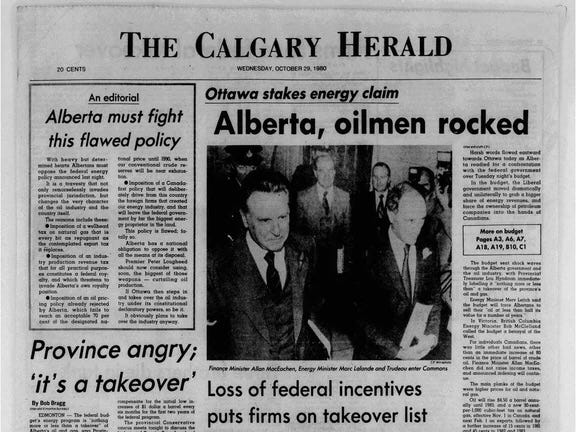
In May of 1987 within the city of Vancouver a Western Assembly was held where the Western Political Agenda was discussed. The Assembly was presented with three paths to the goals discussed;
- Working through an existing political party
- Forming a new western based interest group
- Forming a new western based political party
Manning presented the three options to the assembly where attendees voted 77% in favor of the third option, from here a resolution was passed to hold the founding convention for the new party in Winnipeg in the fall of that year.
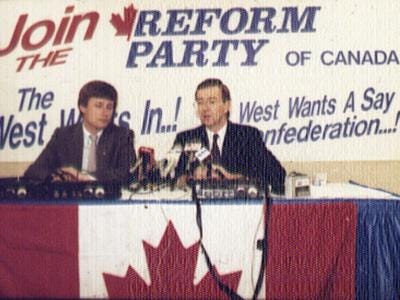
In the fall of 1987, the convention in Winnipeg was held and the right wing populist party named the Reform Party was founded. One of the highlights of the convention was an address by a young Stephen Harper on the application of a “regional fairness criterion”. It was here that Manning invited Harper, a graduate student in economics, to be the Policy Chief of the new party, Harper would play a major role in drafting the election platform of 1988 for the Reform Party.
The First Election
In 1989 the Reform Party member Deborah Grey had won the parties first seat in the riding of Beaver River AB - now Lakeland AB which is located in central east Alberta. After winning this single seat in the Federal House of Commons, the Reform Party had planted its first seed in Ottawa that would allow the party to grow exponentially over the next decade.
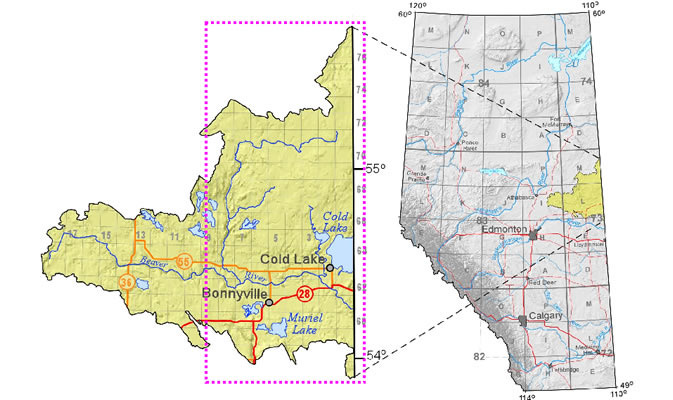
The populist party really made its major breakthrough in federal politics in the 1993 federal election when it successfully won 52 seats in the House of Commons (HoC) and reduced the PC’s seat count down to just 2 seats, The 1993 federal election not only saw an exponential growth of support for the Reform Party, this also marked the beginning of the Québec federal party called the Bloc Québécois that won 54 seats in the HoC.
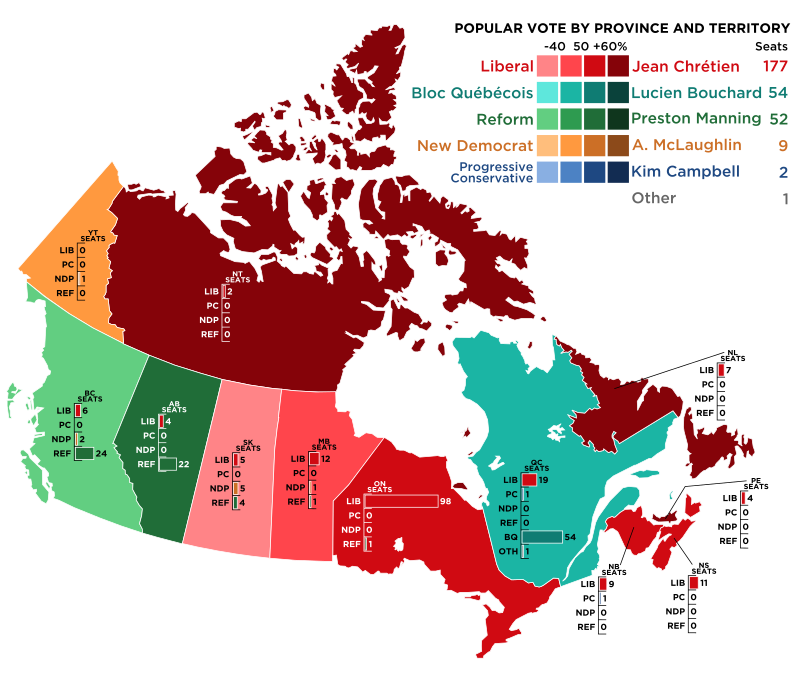
The Reform Party’s platform consisted of many populist ideas such as free trade, direct democracy (referendums, grassroots initiatives and the ability to recall elected politicians). The Reform Party also supported what was called Triple-E (equal, elected and effective) Senate. The Reform Party created controversy in Ottawa with statements from party members on immigration, LGBT issues and policy regarding Québec which opposed demands for special status within confederation. Reform leader Preston Manning himself once publicly stated that "homosexuality is destructive to the individual, and in the long run, society".
Following the 1993 election when the party began to battle controversies over the leadership of Manning, the party was also experiencing growing accusations that the party was hostile towards Québec and harbored extremist views towards ethnic minorities, women and homosexuals. The support of the Reform Party also dwindled when the Liberal government adopted more fiscally responsible policies as well as a strengthening Canadian economy, the 1995 Quebec referendum also buried the growing concerns over separation making the point irelevant.
The Official Opposition
The Reform Party reached its pinnacle following the 1997 federal election when the party won 60 seats within the HoC making it the official opposition to the Liberal Party. For comparison the Liberals won another majority with 155 seats with the Bloc earning 44 seats and the PC’s earning 20 seats. This breakdown of seats won highlights what the Reform Party experienced moving forward, they could not break through anywhere east of Manitoba for more support or earning more seats. This would mark the final election with the Reform Party under their current banner. It was at this time that the Reform Party seeing that they could not break through the electorate east of Manitoba that they began the call to unite the right, something the PC’s were still hostile towards. Without the merger of the two conservative party’s the conservative vote would continue to be split allowing the Liberals to continue with a majority.
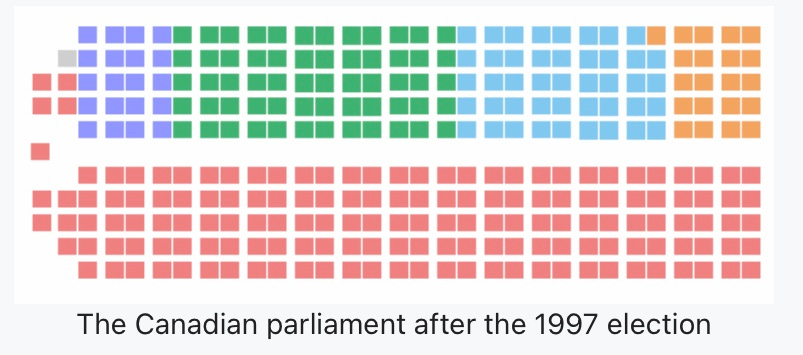
The Canadian Alliance
Following the 1997 federal election it became apparent that the Reform Party stood no chance at garnering any more seats east of Manitoba just as it was clear the Reform party was holding back the PC’s from any further momentum west of Ontario. Two political conventions were held to address these issues with the second convening in January 2000. It was at this second convention that the creation of a new political party, the Canadian Alliance took place. In March of 2000, the Reform party died with the vote of the members of the Reform party to adopt the constitution, policies and name of the Alliance. In July of 2000, Preston Manning who was looking to lead the Alliance was defeated in a leadership vote to Stockwell Day.
The Alliance Platform & Snap Election
After the Alliance was formed in 2000 the party released the platform that would outline the party’s policies they would campaign on.
- 17% tax rate for all Canadians
- Mandated balanced budgets
- Support of free enterprise, strong families, safer streets and secure borders
Shortly after the Leadership race saw the victory of Stockwell Day, the Liberals called a snap election leaving the newly founded Alliance unprepared for an election campaign. However even with the short notice and no time to prepare, the party managed to gain 6 more seats than what their previous party was able to win leaving the Alliance as her majesty’s official opposition.
Scandals plague the Alliance
After the November election, the party had fallen short of many of the members expectations of the results of the election. Stockwell Day’s reputation and the credibility of the party began to decline over the months that followed the election. Stockwell Day’s defamation lawsuit continued to plague himself and the party along with other political mistakes that were viewed as an embarrassment to the party. This added to the growing dissension among party members that saw various members quit in the spring of 2001. In July of 2001 Stockwell Day stepped down as party leader paving the way for Stephen Harper’s election as party leader in March of 2002.
The Birth of the Harper Era
Following the leadership vote that saw Harper ascend to the leadership of the party, the PC’s under Joe Clark had hoped that the Alliance would descend further into oblivion thus allowing a revival of the PC’s as a formidable political party. History would look down on Clark and would see him resign as leader in August of 2002.
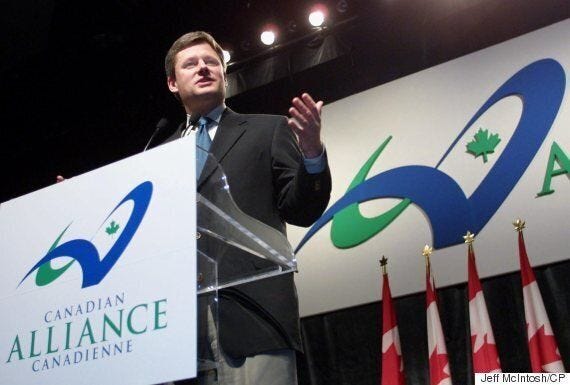
Shortly after the new leader Peter McKay took over the PC party he began negotiations in secret on a merger with the Alliance. In October of 2003 an agreement had been made between Harper and McKay to merge the two parties. In December of 2003 the members of the Alliance saw an overwhelming 96% vote in favor of the merger. The next day the PC’s held a vote with a similar outcome of members voting in favor.
December 8, 2003 Alliance leader Stephen Harper and PC leader Peter McKay formerly announce the founding of a new federal political party, the Conservative Party of Canada was born.
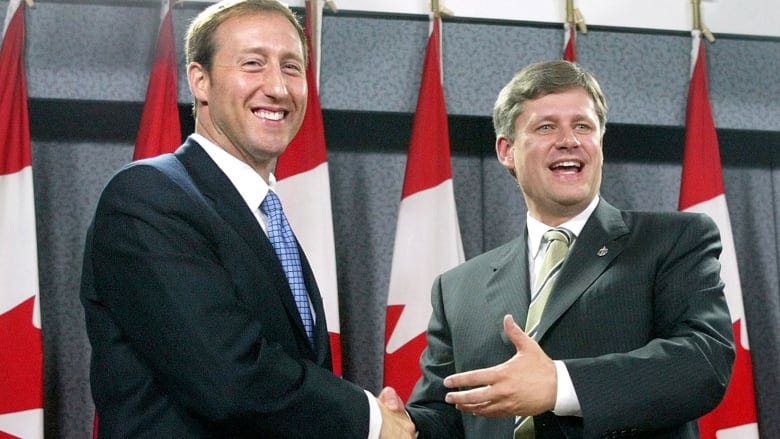
On November 28, 2005 the Paul Martin Liberal government was defeated after a vote of non-confidence due to the sponsorship scandal with three of the opposition parties triggering an election. Following the dissolvement of the Liberal government an election was held that winter and on January 23, 2006 the newly founded Conservative Party of Canada won a small minority government. This was the first of three elections that would see the Harper government reign for 12 years and forming a majority after the election in 2011.